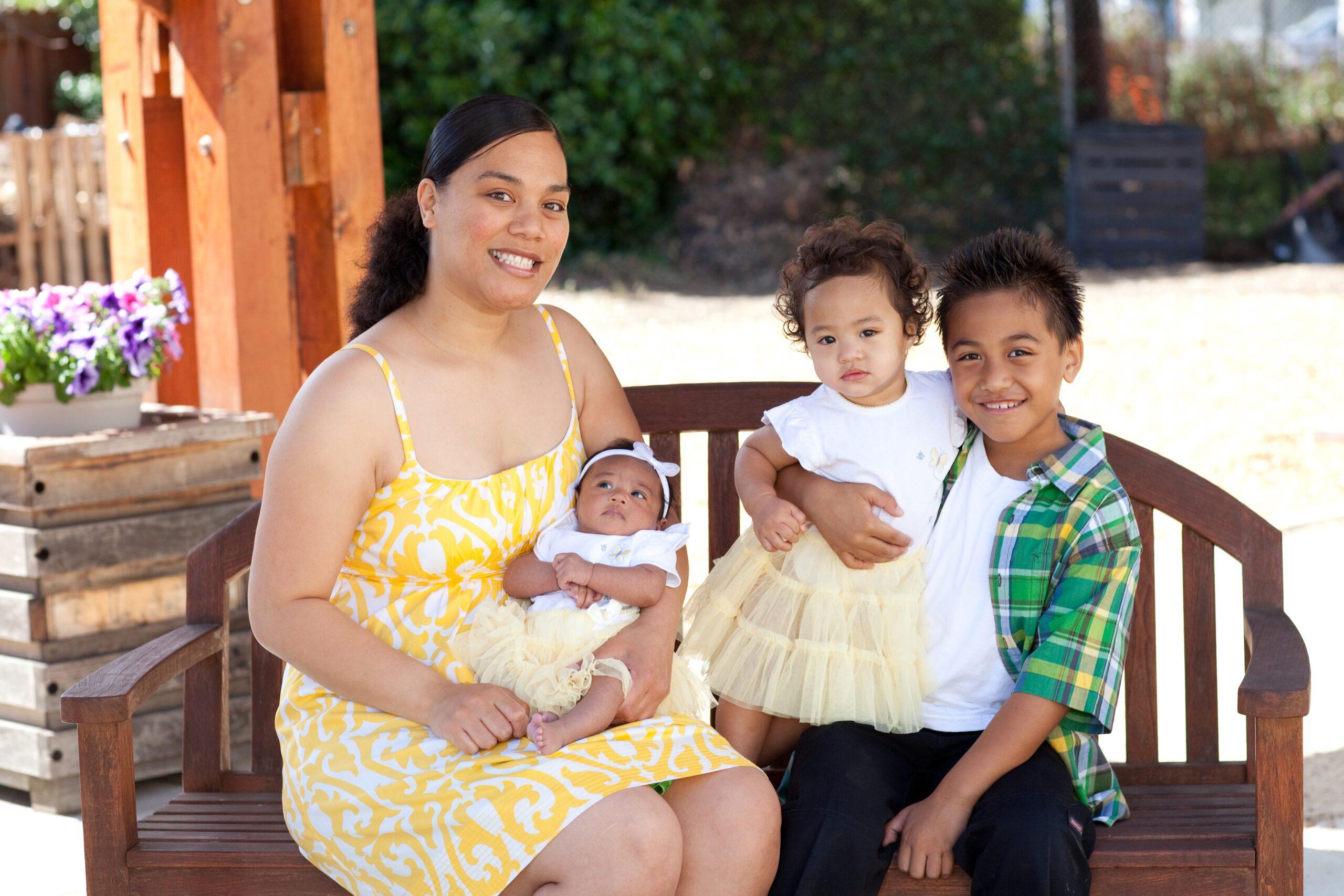Homelessness is often negatively portrayed as the single person living on the streets. The reality of homelessness is far more complex. Families with children make up a significant portion of the homeless population in the United States. Family homelessness is a hidden epidemic in our community. Many unhoused families are hidden from the public eye—bouncing from place to place, living in garages, basements, vehicles, or in crowded apartments with other families – struggling to find a place to call their own.
The Scope of the Problem
The numbers are staggering. According to the National Alliance to End Homelessness, on a single night in January 2023, over 186,000 people in families were experiencing homelessness.
While some find shelter in programs like LifeMoves, a significant number are living on the streets, in cars, or in abandoned buildings. An estimated 1 in 30 American children will experience homelessness at some point in a year.
Why are Families Homeless?
The root causes of family homelessness are complex, but some key factors are:
- Lack of Affordable Housing: The cost of housing has risen dramatically in recent years, while wages haven’t kept pace. This leaves many families struggling to afford rent, even when both parents are present and working.
- Poverty: Families living in poverty are much more vulnerable to homelessness. Even a minor setback, like an illness or car repair, can tip them over the edge.
- Domestic Violence: Fleeing an abusive relationship is a common reason why families become homeless, particularly single-mother households.
The Devastating Consequences
Family homelessness has a profound impact on everyone involved. Families struggle to access basic necessities like hygiene facilities and healthcare. The stress and trauma of homelessness can damage family bonds and lead to mental health issues.
Children experiencing homelessness are more likely to suffer from:
- Health problems: The stress and instability of homelessness can lead to a weakened immune system and difficulty accessing healthcare.
- Educational challenges: Frequent moves and crowded shelters disrupt schooling, making it difficult for children to keep up academically.
- Emotional and behavioral problems: Children experiencing homelessness often experience anxiety, depression, and behavioral issues.
What Can Be Done?
There is no easy solution to family homelessness, but there are steps we can take:
- Shelter and Supportive Services: Providing wraparound services like job training, childcare, and mental health support can help families achieve stability.
- Increase Affordable Housing: Investing in affordable housing programs and rent control measures can help ensure families have a safe place to live.
- Raise Awareness: Combating stereotypes and educating the public about the realities of family homelessness is crucial to garnering support for solutions.
LifeMoves Provides Programs Designed to Support Unhoused Families
At LifeMoves, 1 in 5 beds are occupied by a child. Our family interim supportive housing sites have Children’s Services Coordinators who assist with childcare, connect children to appropriate services and coordinate educational programs.
LifeMoves offers unique programs, designed to support our families and children with the tools and support clients want and need.
- Teen wellness workshops: Started last year in San Mateo County and expanded to Santa Clara County this year, we host teen wellness groups led by LifeMoves case managers.
- Teen wellness field trips: Allow our teenaged clients to create new friendships and have fun. We go to movies, bowling and have hiked and participated in a confidence boosting ropes course.
- Summer camp: In 2023, we provided camp for 128 children across 4 locations. This year, we plan to do the same, and will recruit volunteers to work as camp counselors and leads. In addition to arts & crafts and games, we focus on nutrition and wellness and provide 4 field trips.
- Tutoring: LifeMoves sites hold homework drop-in hours where children have a safe space to complete their schoolwork, read, use computers, play games and socialize.
- Parenting programs: Life Moves collaborated with Star Vista to create the EmPowered Parent Program to provide parenting workshops to build skills during the family’s transition.
- Support navigating school services: LifeMoves supports parents and their children by connecting to schools to advocate for special services and Individual Education Plans.
Stay Connected!
Receive stories of hope and transformation from LifeMoves.
By joining our list, you agree to receive informative emails and mailings about LifeMoves.



